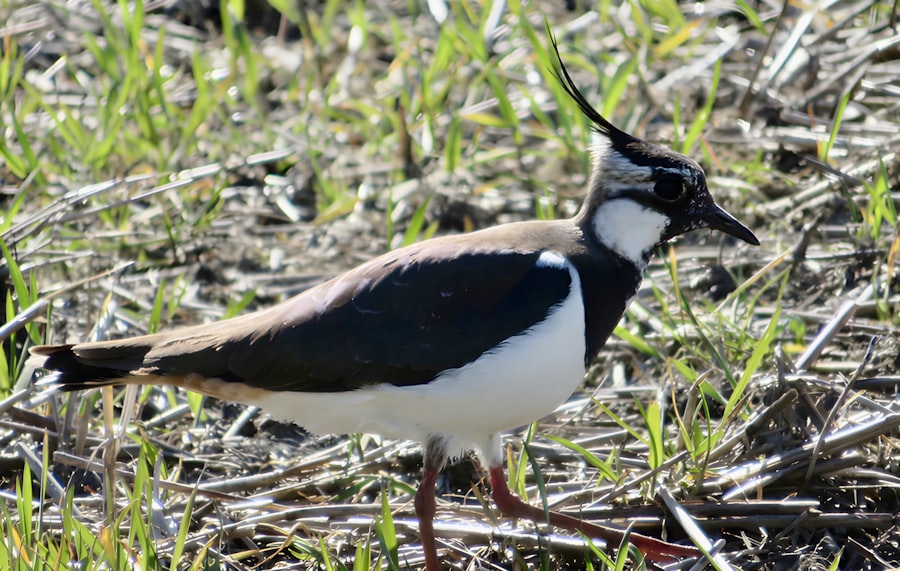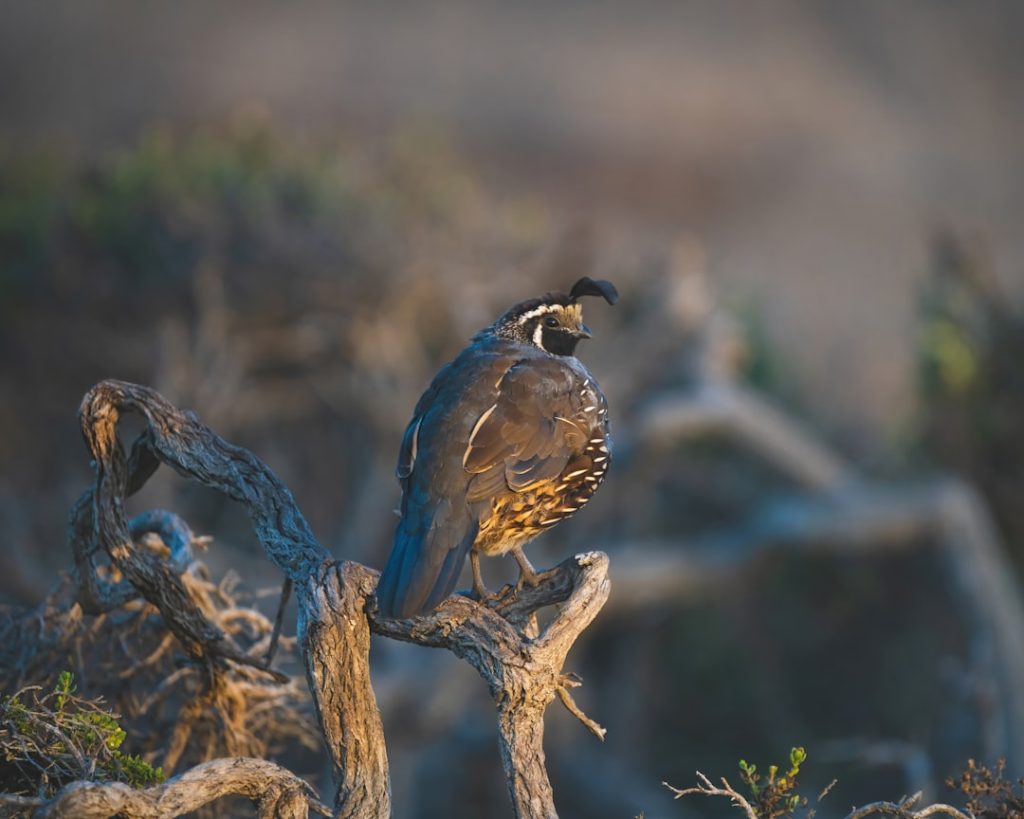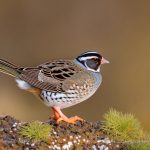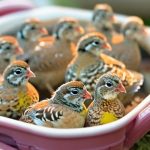When it comes to choosing the right quail breed for your needs, there are several factors to consider. First and foremost, you’ll want to think about the purpose of raising quail. Are you looking to raise quail for meat, eggs, or as pets? Different quail breeds are better suited for different purposes. For example, if you’re interested in raising quail for their meat, you might want to consider breeds like the Coturnix or Bobwhite, which are known for their large size and delicious meat. On the other hand, if you’re interested in raising quail for their eggs, breeds like the Coturnix or the California Valley quail might be more suitable, as they are known for their prolific egg-laying abilities.
Another important factor to consider when choosing a quail breed is the climate in which you live. Some quail breeds are better suited for cold climates, while others thrive in warmer environments. It’s important to choose a breed that is well-adapted to the climate in your area to ensure their health and well-being. Additionally, consider the space you have available for raising quail. Some breeds require more space than others, so it’s important to choose a breed that is well-suited for the size of your enclosure. By taking these factors into consideration, you can choose the right quail breed that best fits your needs and environment.
Key Takeaways
- Choose a quail breed that suits your needs, whether for eggs, meat, or ornamental purposes.
- Build a secure enclosure that provides enough space for the quail to move around and includes shelter from the elements.
- Provide a balanced diet of commercial quail feed, supplemented with fresh greens and clean water at all times.
- Protect quail from predators by using wire mesh, electric fencing, and secure locks on enclosures.
- Monitor quail health and hygiene by regularly cleaning the enclosure, checking for signs of illness, and providing necessary veterinary care.
- Understand quail behavior and socialization to ensure a harmonious flock dynamic and minimize stress.
- Implement breeding practices that promote genetic diversity and sustainable population growth.
Building a Suitable Quail Enclosure
Building a suitable quail enclosure is essential for the health and well-being of your quail. When designing and constructing a quail enclosure, there are several key factors to consider. First and foremost, it’s important to provide enough space for your quail to move around and exhibit natural behaviors. Quail are active birds that require space to forage, dust bathe, and socialize with other birds. As a general rule of thumb, allow at least 1 square foot of space per quail to ensure they have enough room to thrive.
In addition to space, it’s important to consider the materials used in building the enclosure. The enclosure should be made of sturdy materials that can withstand the elements and protect the quail from predators. Additionally, the enclosure should have proper ventilation to ensure good air circulation and prevent the buildup of ammonia from droppings. It’s also important to provide shelter within the enclosure to protect the quail from extreme weather conditions and provide them with a sense of security. By taking these factors into consideration, you can build a suitable quail enclosure that provides a safe and comfortable environment for your birds.
Providing Proper Nutrition and Water
Proper nutrition and access to clean water are essential for the health and well-being of quail. When it comes to feeding quail, it’s important to provide a balanced diet that meets their nutritional needs. A good quality commercial quail feed is a great option as it is formulated to provide all the essential nutrients quail need to thrive. Additionally, you can supplement their diet with fresh fruits and vegetables, as well as protein sources like mealworms or crickets.
In addition to a balanced diet, access to clean water is crucial for quail health. Quail should have access to fresh, clean water at all times. It’s important to regularly clean and refill their water containers to prevent the buildup of bacteria and algae. Additionally, consider using waterers that are designed specifically for quail to ensure they can easily access the water without spilling or wasting it.
It’s also important to consider the placement of food and water within the enclosure. Place food and water containers in areas that are easily accessible to the quail but also protected from contamination by droppings or bedding material. By providing proper nutrition and access to clean water, you can ensure the health and well-being of your quail.
Protecting Quail from Predators
Protecting quail from predators is essential for their safety and well-being. Quail are small birds that are vulnerable to a wide range of predators, including raccoons, foxes, snakes, and birds of prey. When designing and constructing a quail enclosure, it’s important to take steps to prevent predators from gaining access to the birds.
One effective way to protect quail from predators is by using sturdy fencing around the enclosure. Use hardware cloth or welded wire fencing with small openings to prevent predators from reaching through or digging under the fence. Additionally, consider burying the bottom of the fence underground or using an apron of fencing extending outward from the base of the enclosure to prevent predators from digging underneath.
In addition to fencing, it’s important to provide shelter within the enclosure where quail can seek refuge from predators. This can include providing hiding spots like dense shrubbery or small shelters within the enclosure where quail can escape if threatened by predators.
It’s also important to regularly inspect the enclosure for any signs of damage or potential entry points for predators. By taking these steps to protect quail from predators, you can create a safe and secure environment for your birds.
Managing Quail Health and Hygiene
Managing quail health and hygiene is essential for preventing disease and ensuring the well-being of your birds. Regular health checks are important for monitoring the overall health of your quail. Look for signs of illness such as lethargy, decreased appetite, or abnormal droppings, and consult with a veterinarian if you notice any concerning symptoms.
In addition to regular health checks, it’s important to maintain good hygiene within the enclosure. Regularly clean and replace bedding material to prevent the buildup of droppings and moisture, which can lead to bacterial growth and disease. Additionally, regularly clean food and water containers to prevent contamination and ensure your quail have access to clean food and water at all times.
It’s also important to practice good biosecurity measures to prevent the spread of disease within your flock. This includes quarantining new birds before introducing them to your existing flock, as well as preventing contact with wild birds or other animals that may carry diseases.
By managing quail health and hygiene through regular health checks, good hygiene practices, and biosecurity measures, you can help prevent disease and ensure the overall well-being of your quail.
Understanding Quail Behavior and Socialization

Understanding quail behavior and socialization is important for creating a harmonious flock environment. Quail are social birds that thrive in groups, so it’s important to provide them with opportunities for social interaction within the flock. When raising quail, it’s important to consider their natural behaviors and provide an environment that allows them to exhibit these behaviors.
Quail are known for their social nature and form strong bonds within their flock. It’s important to provide enough space within the enclosure for quail to move around and interact with each other. Additionally, providing hiding spots and areas for dust bathing can help promote natural behaviors and socialization within the flock.
It’s also important to consider the dynamics within the flock when introducing new birds. Introducing new birds gradually can help prevent aggression and establish a harmonious social structure within the flock.
Understanding quail behavior and socialization can help create a positive environment for your birds and promote their overall well-being.
Breeding and Raising Quail for Sustainable Population
Breeding and raising quail for a sustainable population requires careful planning and management. When breeding quail, it’s important to select healthy breeding stock with desirable traits such as good egg production or meat quality. Provide suitable nesting areas within the enclosure where hens can lay eggs in a safe and comfortable environment.
When raising quail chicks, it’s important to provide them with a warm and secure brooding area equipped with heat lamps or heating pads. Monitor their growth and development closely, providing them with a balanced diet formulated for young chicks.
As the chicks grow into adults, it’s important to monitor their health and well-being closely. Provide suitable housing that allows for natural behaviors such as dust bathing and foraging while protecting them from predators.
By carefully managing breeding and raising practices, you can help maintain a sustainable population of healthy quail for years to come.
If you’re considering keeping quail outside in the UK, you may also be interested in learning about the best heating options for a chicken coop. Poultry Wizard offers a helpful article on choosing the right heater for a chicken coop, which can provide valuable insights into creating a comfortable environment for your birds during colder months. Check out their article here for expert advice on keeping your poultry warm and healthy.
FAQs
What are the benefits of keeping quail outside in the UK?
Quail are well-suited to outdoor environments and can thrive in the UK climate. Keeping quail outside allows them to exhibit natural behaviors, such as dust bathing and foraging for insects and plants. It also provides them with access to natural sunlight and fresh air, which can contribute to their overall health and well-being.
What do quail need in their outdoor environment?
Quail require a secure outdoor enclosure that protects them from predators, such as foxes and birds of prey. The enclosure should also provide shelter from the elements, such as rain and wind. Additionally, quail need access to a suitable substrate for dust bathing, as well as areas for foraging and exploring.
What should I consider when setting up an outdoor quail enclosure in the UK?
When setting up an outdoor quail enclosure in the UK, it’s important to consider the local climate and weather conditions. Quail may require additional protection from cold temperatures, such as insulated shelters or heated areas. It’s also important to ensure that the enclosure is well-drained and provides adequate ventilation.
What are the potential challenges of keeping quail outside in the UK?
One potential challenge of keeping quail outside in the UK is the risk of predation from native wildlife, such as foxes, badgers, and birds of prey. Additionally, extreme weather conditions, such as heavy rain or snow, can pose a threat to quail housed outdoors. It’s important to take measures to protect quail from these potential challenges, such as using secure enclosures and providing adequate shelter.
Are there any legal considerations for keeping quail outside in the UK?
In the UK, there are regulations and guidelines that govern the keeping of quail and other poultry species. It’s important to familiarize yourself with these regulations, which may include requirements for housing, biosecurity, and disease prevention. Additionally, it’s important to ensure that any outdoor quail enclosure complies with local zoning and land use regulations.
Meet Walter, the feathered-friend fanatic of Florida! Nestled in the sunshine state, Walter struts through life with his feathered companions, clucking his way to happiness. With a coop that’s fancier than a five-star hotel, he’s the Don Juan of the chicken world. When he’s not teaching his hens to do the cha-cha, you’ll find him in a heated debate with his prized rooster, Sir Clucks-a-Lot. Walter’s poultry passion is no yolk; he’s the sunny-side-up guy you never knew you needed in your flock of friends!







